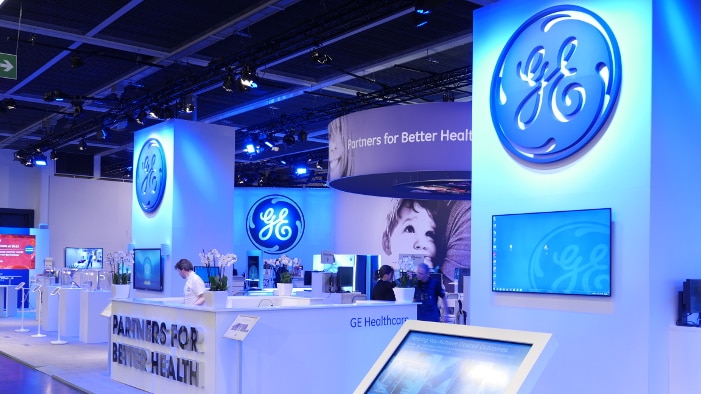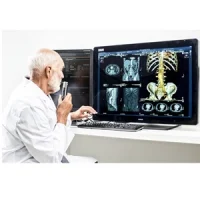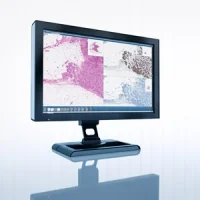Latest Articles
Up in the Cloud: The Future of Digital Healthcare In Europe
Up in the Cloud: The Future of Digital Healthcare In Europe
 In today’s healthcare landscape, traditional healthcare models are showing their age. At this year’s ECR in Vienna, GE Healthcare showcased the software that could soon make diagnosis and collaboration between healthcare professionals as easy as social networking.
In today’s healthcare landscape, traditional healthcare models are showing their age. At this year’s ECR in Vienna, GE Healthcare showcased the software that could soon make diagnosis and collaboration between healthcare professionals as easy as social networking.
In the last decade, investment in digital technologies for healthcare has risen sharply. Both private cloud computing infrastructures and public ones have made it possible for a revolution to occur in every aspect of healthcare IT, from electronic patient records, to remote diagnostics, to online appointment bookings.
“Today we have more than 1.1 petabytes of stored examinations in the Cloud, in the form of structural data,” said Dimitris Moulavasilis, CEO of Affidea. “We see digital playing a bigger and bigger role in everything we do. These infrastructures are governing our workflow, allowing us to become more efficient.”
Affidea is one of the largest healthcare investors and operators through Private Public Partnerships (PPP) in Europe. The company performs remarkable radiological diagnostic, cancer treatment and clinical laboratory services in 170 wholly-owned medical centers. It is continually growing and driving treatment delivery to areas where none yet exists. This is made possible by solutions like the Health Cloud and the DoseWatchTM analytics platform.
What digital tech has done for healthcare is to separate image acquisition from image interpretation. That means that an image can be acquired from an MRI in a hospital setting, but the clinician interpreting that image and making diagnoses doesn’t have to be there. In fact, by connecting to the Cloud, they can access it from anywhere in the world.
“Radiologists in several countries work on digital hubs,” said Moulavasilis, “where they receive a set number of clinical images tailored to their specific medical expertise. They are more productive this way, and can provide high-level expertise to areas where it would otherwise be quite scarce.”
The role of digital healthcare, from telehealth to EMRs, will help democratize and even out access in Europe. Parts of the region, especially Eastern Europe, have struggled for years with a lack of healthcare professionals. “Many of them emigrate after training,” added Moulavasilis. “by using digital, we can retain medical professionals in their home countries by offering them a great place to work, using exceptional technology. And the technology is only getting better: Affidea has worked on developing voice recognition in almost all languages, to help clinicians across Europe overcome language barriers and equalize access to high quality health expertise even further”.
 As well as improving the way healthcare works, digital tools improve the quality of radiologists’ work. It is now well-known that radiation from CT scanners must be monitored in patients who have several scans. Without digital solutions, it can be impossible to keep track of a patient’s radiation dose from one scan to the next. “Most of the CT scanners in our network are connected to the GE system,” said Moulavasilis. “They work with DoseWatch, the analytics platform, and then on the back of that we put together a process which allows clinicians to get an online alert whenever radiation dose is above a certain level.”
As well as improving the way healthcare works, digital tools improve the quality of radiologists’ work. It is now well-known that radiation from CT scanners must be monitored in patients who have several scans. Without digital solutions, it can be impossible to keep track of a patient’s radiation dose from one scan to the next. “Most of the CT scanners in our network are connected to the GE system,” said Moulavasilis. “They work with DoseWatch, the analytics platform, and then on the back of that we put together a process which allows clinicians to get an online alert whenever radiation dose is above a certain level.”
By analyzing the data from around 60,000 CT scans per month, clinicians are now able to extract the right protocols, which allow for the highest image quality at the lowest possible radiation level, in line with the ALARA (AS Low As Reasonably Achievable) concept. “This has been a Pan-European project which has brought significant results in many countries,” remarked Moulavasilis.
As with any IT system these days, security is a top concern. In today’s world, cyber-attacks and security breaches have become a real threat to the sensitive data gathered by medical devices every day.
“We treat 4.4 million patients per year,” said Moulavasilis. “We have vast amounts of data on our servers around Europe. We developed a strategy to be ready for this digital revolution, and invested significant amounts into keeping that data safe. So although we haven’t had any incidents so far, we do think that in the future of this revolution, security will revolve around everything we do. Security should be, and already is, a top priority.”
Advances in digital technologies present tremendous opportunities for the healthcare industry to achieve the efficiency, reliability and affordability needed to deliver a much higher standard of healthcare to parts of Europe where shortages of healthcare professionals are impacting patient outcomes. With advances like the Health Cloud and DoseWatch, the digital revolution is well and truly here.
As Moulavasilis said in an interview for ECR Magazine, “I think radiology is an exciting specialty; it is going to lead to medical advances for years to come. These advances will open new horizons in diagnosis and will allow diagnoses unimagined today; interconnectivity will allow expertise to move closer to the patients and improve patient/clinician communication. IT advances, rather than removing the need for radiologists, contribute to improve radiologists’ productivity.”
Source & Image Credit: GE Healthcare
Hospitals are rapidly evolving into smart, connected ecosystems focused on proactive, personalised care. Leveraging AI, robotics, remote monitoring and digital health tools, they enhance diagnostics, improve workflows and support decentralised models like virtual wards. Predictive analytics, interoper
READ MOREThe Valencia Health Region deployed a vendor-neutral AI orchestration system across 29 hospitals to improve emergency radiology. Validated at Hospital General Universitario Dr Balmis, it streamlines triage, accelerates diagnoses and reduces radiologists’ workload. The system processes over 5,700 studi
READ MORE3D printing is transforming healthcare through personalised devices, surgical precision and faster prototyping while advancing sustainability. On-demand production reduces waste, supports circular economy models and lowers carbon footprints by minimising transport and inventory. Despite its promise,...
READ MORE




